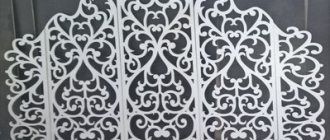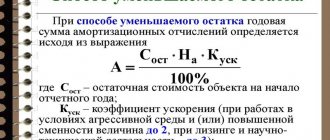Currently, tire retreading is a very popular operation that allows you to extend the life of expensive car tires. This service is relevant for both passenger vehicles and trucks, but in practice, truck owners use the tire retreading service much more often. This is due to the fact that, firstly, a certain part of car owners are not aware of this procedure, and secondly, the cost of passenger tires is an order of magnitude lower than truck tires, so a complete replacement of tires does not incur significant financial costs.
The essence of this service is to replace the worn tread with a new one. The basis of any tire is a carcass, which is a multilayer braid of metal cord and synthetic/nylon fabrics. This frame, as a rule, is not subject to wear, because the tread is in contact with the road surface. Accordingly, with timely treatment, when the tread is worn out, it is possible to restore the tire.
Retreaded tires have almost the same characteristics as new ones. They allow you to drive your car confidently both on normal and on wet/slippery roads. Car owners' costs for restoration are significantly lower than for purchasing new tires. The only drawbacks are slightly reduced handling characteristics and reduced service life. According to statistics, if the tire retreading procedure is followed correctly, the defect rate is about 0.06%.
The tire retreading procedure cannot be used for budget models in which the cord has low strength. Also, tires intended for use in high-speed cars cannot be retreaded.
Types of tire retreading
There are three main ways to restore tires.
1) Tire cutting. This procedure is only relevant for truck tires, and not every tire can be retreaded. Its suitability for restoration by cutting is indicated by the inscription “Regroovable”.
The essence of this method is that under the original tread there is a fairly thick protective layer of rubber. In terms of its chemical composition, it is no different from the top layer, so the protector made on its basis is similar to the original one.
2) Hot vulcanization. The essence of this method is to “weld” the tread, since the protective layer of rubber is thin and not suitable for cutting. The main disadvantages of the method are increased rubber wear from high-temperature treatment, a decrease in potential mileage due to damage to the upper part of the tread, and a certain likelihood of defects appearing in the cord layers.
3) Cold vulcanization. This method is similar to hot vulcanization, only it is carried out at lower temperatures, which makes the restoration more gentle. This method can be used for wheels that have already undergone a restoration procedure; the physical properties of the rubber do not change, and the condition of the cord remains strong and elastic. The disadvantage of this method is that not all tires can be retreaded using cold vulcanization.
Tire recycling plant business plan
The first thing you need to do before starting a business and opening a tire recycling plant is to calculate a number of important points - choosing premises, purchasing new or used equipment, purchasing used tires for recycling.
Why is the problem of tire recycling becoming more and more urgent? Every year the number of used car tires that cannot be used for their intended purpose is growing rapidly. According to statistics, the recycling rate of old tires is no more than 20% annually. However, if you approach this issue wisely, you can not only resolve the environmental conflict, but also create a small but profitable business.
This is due to the fact that tires themselves are polymer raw materials that are used in various industries. From 1000 kg of used tires you can get at least 700 kg of rubber. The resulting material is used in construction, in the manufacture of various coatings, as well as fuel materials. The damage caused to the environment is irreparable and enormous - when burning 1 ton of tires, about 300 kg of soot and 450 cubic meters of toxic gases are released. Recycling used tires is not a large-scale business, but in a city or region it can become a source of stable income.
Where to start a business
A tire retreading business should begin by determining which tires will primarily be retreaded: trucks or cars. It depends on what type of vehicle prevails in the locality. For example, if a city is a transshipment point or is located on the path of huge highways, then the traffic through it of freight transport is high, so opening a workshop for retreading truck tires would be relevant. It is not worth opening a workshop only for passenger tires, because the used budget tire models are not recommended to be retreaded; there is a high risk of their final wear.
Then you should decide on the tire retreading technology - what type of retreading will be used. It doesn’t make sense to combine all types; it’s enough to choose one or two: cutting and hot/cold vulcanization.
After this, it is worth preparing a business plan that takes into account all the costs of implementing ideas, risks and expected income. It is important to take into account any nuances that may arise both when starting a business and during its development.
To start a business activity, you must register with the relevant authorities and register yourself with the tax service.
The technological process of processing as the main idea for organizing a business.
The main thing is to equip a site for storing tires and organize their storage areas. Those businessmen who know how to benefit from everything can immediately set a goal - to replenish supplies of raw materials, earning here, albeit small, but money. After the site has been prepared, permission to use the land for this type of business meets all requirements, has been checked by various control authorities (primarily firefighters and environmentalists) and all necessary permits have been obtained - you can place advertisements in local media, contact large and medium-sized automobile enterprises with an offer to accept used tires from them for a small fee. We think that you will have clients quickly enough.
It is advisable to carry out storage in an organized manner; before the tire takes its place, it is necessary to carry out an external inspection and remove foreign objects. Particular attention should be paid to the absence of metal parts, which could cause equipment failure during processing. Accordingly, our recommendation is that the warehouse should be divided into three parts:
— unloading area;
— area for external inspection and, if necessary, cleaning;
- warehouse area.
So, there is a supply of raw materials, storage and replenishment are organized, you can move on to the next stage.
Tire cutting is the separation of metal parts, rubber filler from the metal cord in special devices and abrasion of the rubber into crumbs with fractions of a certain size. The set of equipment necessary to perform this work includes two main units. At the first stage, using guillotine knives, loaded tires are cut into pieces or cut into strips (depending on the complete equipment used). The next stage is grinding the workpieces on the conveyor and separating the rubber from the metal cord. The principle of operation is similar to the operation of an ordinary vegetable grater, when the product is abraded under a certain pressure.
Next, all that remains is to collect the metal at a special site, from where it can later be transported to a recycling collection point. Rubber crumbs are packed into specially prepared bags and stored. It is advisable to organize the warehouse indoors or, at least, under a canopy to protect the prepared raw materials from possible exposure to precipitation - rain or snow.
So, after a fairly complete theoretical preparation, it’s time to move on to developing the main document - a business plan.
Preparation of documents and registration of organization
When registering a business, it is worth paying attention to the two most common forms in small and medium-sized businesses: individual entrepreneurship and limited liability company.
Since this business requires significant costs and has certain risks and responsibilities, the best option would be to register an LLC. The disadvantages of this form of entrepreneurship are the need for complex reporting and full accounting.
Registering an LLC begins with choosing the name of the legal entity under which the company will act in all transactions. It should reflect the essence of the business, be correct and memorable. Next, you need to select the legal address of the organization. This can be done in three main ways: at the place where the premises are rented, by purchasing an address from specialized companies and by registering at the home address of the founder. Then the selection of the main and additional activity codes according to OKVED is carried out, and the size of the authorized capital is determined. Next, if there is only one founder, his decision on establishing the company is prepared. If there are several founders, an incorporation agreement is required. After this, the company's Articles of Association are prepared.
After collecting all the necessary documents, fill out form P11001 for registering an LLC and pay the state fee (4,000 rubles), a receipt for payment of which is attached to the application. After choosing a taxation system and submitting all necessary documents for registration, the created legal entity can carry out its activities legally.
Choosing a location and premises
The ideal location for a tire retreading workshop is a populated area that forms an intersection of transport routes. In most cases, these settlements have a significant population, which will also play into the hands of opening a business, as it will allow servicing a certain proportion of cars and small trucks operating in the settlement itself. The specific location of construction/lease is not particularly important, everything is determined by the availability of financial resources from the founder, but it is quite profitable to organize a business close to the highways along which the communication routes lie.
The room for a tire retreading workshop must have an area of at least 200 square meters and a ceiling height of about 5 m. This is due to the fact that at least one vehicle that is being serviced, all the necessary equipment, tools and materials, as well as office space will be located inside. premises. The room must be connected to water and energy supply and drainage systems.
The premises can be rented or rebuilt. Construction of such a hangar through the services of construction companies will cost approximately 1,500,000 rubles. Renting a space of this size will depend on the region of the country, part of the city, nearby infrastructure and the condition of the hangar. On average, the price for 1 month of rent is about 50,000 rubles. Accordingly, if you focus on business in the long term, then the best option would be to build a new premises.
Equipment for tire welding and tire retreading
Retreading worn tires using the innovative cold welding method is a profitable business under normal conditions and extremely profitable during an economic crisis.
The consumer can be offered a high-quality tire that will cover the same number of kilometers as a new, similar one. But at the same time, its retail price will be only 50-70% of the cost of a new one, and the cost of restoring a worn tire will be 15-25% of the market value of a “run-free” tire. Tires of any type and size can be retreaded. But the most profitable thing is the restoration of truck and SUV tires. The consumer of such tires can choose any tread pattern from a variety of options for the same frame. The tire retreading line does not require large production areas, is environmentally friendly, has a low cost and a short payback period. Raw materials for restoration are available in almost any locality.
The demand for retreaded tires is ensured by the following factors: - a huge number of cars requiring periodic replacement of tires; Modern civilization is unthinkable without cars. — the desire of organizations and individuals to reduce costs and save money (especially during an economic crisis). A high-quality retreaded tire is an excellent alternative to a new one, especially since such tires run about the same.
In this section we will briefly talk about this type of business.
History of the “cold recovery method”: This technology began to develop rapidly in Europe and the USA several decades ago, and in the last 15 years - in the countries of the Asia-Pacific region. The cold tread renovation method is very different from the “hot tread welding”, well known to Russian consumers, the quality of which leaves much to be desired. Today, thousands of high-quality tire retreading enterprises operate abroad. Their products enter the Russian market, and the consumer often does not even realize that he is using retreaded tires. This indicates the excellent quality and reliability of such rubber.
Main stages of recovery:
1. Inspection of the tire. This is the most important part of the process. At this stage, frames suitable for restoration are identified. A visual check of the inner layer, sides, sidewalls, and crowns is carried out. Detected damage is marked and an individual tire card is filled out. Tires that are incompatible with high-quality retreading are sent for recycling.
2. Roughing (cutting, removing) the remains of the old worn tread. The buffing machine gives the carcass the shape, size and texture needed to apply the new tread. A powerful grinding bit removes the remains of the old tread.
3. Tire repair. Identified defects and damage (cuts, punctures) are repaired. The tire is installed in a special machine, where a worker makes external and then internal repairs to the tire. External damage is developed, cleaned, and through punctures are reinforced with special patches.
4. Preparing the tire for vulcanization. The outside of the tire is specially primed. composition of raw rubber. After this, it should dry for 10-25 minutes. Using a manual extruder, the external damage developed during tire repair is filled with a raw rubber compound. After this, a layer of raw rubber tape is applied to the frame, which will serve as a reliable interlayer material for the frame and tread.
5. Applying a protector. The prepared frame is clamped in the machine and a new protector is applied in a special way.
6. Packing in an envelope and mounting the rim. The prepared frame is placed in machines that place a special envelope on it, and a camera and rim are placed inside. This is necessary to pump out air and ensure a tight fit of the frame to the new tread. After this, the frame, completely ready for vulcanization, is placed on a storage conveyor, along which the product goes to the next stage. On the same conveyor, on the other side, vulcanized tires are unloaded and on the same machines the tube, rim and envelope are dismantled.
7.Vulcanization. This process takes place in a special autoclave with a precise ratio of time, temperature and pressure. All process parameters are set by the operator. The prepared “dressed” frames are placed in the loading hatch of the autoclave and at the same time connected to a vacuum pump. High pressure (at least 6 bar) is created in the “barrel” of the autoclave. Thanks to this, the tread is pressed into the frame, and the optimal temperature enhances the effect of chemical adhesion. Raw rubber is vulcanized. The frame becomes one with the new tread.
8. Dismantling the rim and envelope. The tires are unloaded from the autoclave using the same conveyor. A new batch of tires prepared for vulcanization is immediately recharged, and the vulcanized, still “dressed” tires are used for dismantling the tube, sleeve and rim.
After a batch of tires is unloaded from the autoclave, the rim, sleeve and tube are dismantled. While the tire is hot, a final visual inspection is carried out. If there were any undetected defects or repair omissions in the tire, they clearly appear at this stage.
Equipment configurations. Various basic configurations of cold welding lines are possible:
- LV-8. Number of workers: 3 people/shift. The total power of the machines is 65 kW. Productivity -20 tires/8 hours.
- LV-12 Number of workers: 4 people/shift. The total power of the machines is 75 kW. Productivity -30 tires/8 hours.
- LV-16 Number of workers: 5 people/shift. The total power of the machines is 85 kW. Productivity -40 tires/8 hours.
- LV-24 Number of workers: 6 people/shift. The total power of the machines is 125 kW. Productivity -60 tires/8 hours.
- The lines retread tires with a landing diameter from R14 to R24.
- We offer additional options and consumables for basic configurations.
- Equipment warranty - 24 months.
- The quality of the equipment meets European standards, and in addition to Russia, it is exported to Italy, Greece, Korea, India, the USA, and Eastern European countries.
Justification of the economic feasibility of using the cold tire retreading method.
— The picture shows a standard truck with R 22.5 or R20 tires. — As an example, let’s take a small enterprise engaged in road transportation that has 10 units of such equipment. — Market value of 1 imported tire = 14,000 rubles. — Total required: 22 pieces/1 truck* 10 trucks*14,000 RUR/piece = 3,080,000 RUR. This amount is needed at least once a year to purchase new tires. — If a car company delivers worn-out tires to a tire welding plant, then the restoration service will cost approximately 4,500 rubles per tire. The savings in this case amount to RUB 2,090,000. — If a cargo carrier buys retreaded tires in a store, he will save 50% of the price of new ones – RUB 1,540,000. — A tire retreading company will earn from 2,500 to 5,000 rubles from each retreaded tire. And this is only = 550 -1,100,000 rubles. — A cold retreaded tire runs about the same number of kilometers as a new one. This is an axiom that has been proven over the years, first in Europe and the USA, then in China and other Asian countries, and now in the CIS countries. Conclusions: 1. The above calculations clearly show the advantage of using cold retreaded tires. This is a competitive advantage in the transportation market; This saves money on business development. 2. It is profitable to engage in tire retreading in any city where there are freight vehicles and a population of over 50,000 people. This business can be carried out by: tire processing and recycling plants; tire shops; motor transport enterprises; and simply everyone who wants to invest money in their own profitable business.
So:
— Various line configurations, with a capacity from 20 to 60 tires/shift. — Consumables (tread tape, raw rubber). — Training, installation supervision.
The business economics are simple: - 15-25% cost of reconditioning a truck tire. — 70% of the cost of a new similar selling price. — Monthly net profit from 2 to 10 million rubles, depending on the configuration, the number of shifts and the selling price of the refurbished tire. The quality of retreaded tires matches the quality of new ones.
Other related articles:
- Supervised installation of equipment
- Paid tire recycling
- Welding car tires as a business idea
20.01.2010
Staff
All workshop personnel can be divided into 2 categories: administrative staff (manager, accountant) and specialists who carry out the main work.
The manager’s tasks include organizing the company’s activities: promotion, searching for clients, concluding contracts with various organizations if necessary, maintaining relevant reports. Requirements: experience as a manager, higher specialized education, understanding of the specifics of the company's activities, necessary personal qualities. Salary – 40,000 rubles.
The company's accountant prepares the necessary financial statements. Requirements: experience as an accountant, higher education in economics. Salary – 35,000 rubles.
If the founder of the organization has the necessary competence, then in order to save money, these functions can be performed independently.
To perform work when opening an organization, 3 specialists are required. Basic requirements: work experience, necessary qualifications, knowledge of the technology of the operations performed and the necessary personal qualities (responsibility, healthy lifestyle, etc.). The salary of specialists is 25,000 rubles. If the volume of orders increases, it is recommended to increase the staff of specialists and wages.
Equipment
The costs of all necessary equipment, consumables and tools will depend on the intended tire retreading technology. However, when using any technique, a set of universal tools is required. The cost of a complete set will cost approximately 100,000 rubles.
When using the tire cutting technique, a special thermal knife is required, the cost of which is approximately 20,000 rubles. It also requires purchasing several sets of blades of different types and thicknesses, which will cost a total of 5,000 rubles.
When using the hot/cold vulcanization method, you must purchase a vulcanizer. They are portable and stationary, the main difference between them is price and power. Portable ones are cheaper, but they are less powerful and may not fit certain truck tires. Powerful stationary vulcanizers are much preferable. The cost of such equipment is about 100,000 rubles.
The main consumables for vulcanization are raw rubber (on average about 2,000 rubles per 1 kg of material) and glue for vulcanization (on average about 2,000 rubles per 1 liter). To begin work, you must purchase the necessary materials for an amount of at least 50,000 rubles. In the future, they must be purchased as they are used up.
Additional consumables for vulcanization include degreasers, sealants, puncture detection concentrates, sealants, special pastes and much more. The total cost of additional materials upon initial purchase is 25,000 rubles. In the future, they are also purchased as needed.
In total, the total starting costs for the purchase of all necessary equipment for all tire restoration methods are about 300,000 rubles.
Technology
The technology for restoring tires depends entirely on the technique used.
When cutting tires, a specialist uses a special thermal knife heated to a certain temperature. This knife is connected to a high-frequency oscillator. When cutting through the upper protective layer, the rubber is instantly sealed, so its accelerated wear is prevented. The time spent on restoring one tire is 1 hour. The tire cools down for another 1 hour and is ready for use.
During hot vulcanization, the tire is initially subjected to “roughing”—the treatment of the tire with abrasives. After this, the thickness of the layer between the working surface and the cord is approximately 1.5 millimeters. In this condition, all the defects that the tire received during operation are visible. Then “plasters” of raw rubber are glued on, after which the tire is sent to the vulcanizer. Subsequently, the quality of the treated tire is monitored, and only after that a binder layer and new rubber are applied, on which a new tread has already been cut. Then the wheel is again sent for vulcanization at a temperature of about 170 degrees. The whole process takes a little time, and the resulting tire becomes durable.
During cold vulcanization, “roughing” also makes it possible to detect damage, raw rubber eliminates them through primary vulcanization, and during secondary vulcanization a new tread is welded on top. The difference with hot vulcanization lies in the temperature used during vulcanization - with cold vulcanization it is about 100 degrees.
Stages of tire retreading:
– inspection using an ultrasonic gun, then on a stand using powerful lamps. Detected tire defects are recorded and entered into a special tire card. If the tire is unsuitable for retreading, then it is sent for recycling;
– then the worn tread is removed using a machine with a roughing crown (roughening process);
– the tire is placed in a special glass. Cuts, punctures and other damage are repaired from the outside, and then from the inside. Through holes are reinforced with patches, and external deformed areas are cleaned;
– the outer surface of a car or truck tire is primed with raw rubber, after hardening the defects are filled in, then a layer of rubber is applied to the frame;
The use of various advertising channels is largely determined by available financial resources.
An expensive and effective channel is advertising on television and radio. In this case, it is necessary to use channels for the target audience.
A less expensive, but nevertheless effective way is outdoor advertising: banners, printed materials. Banners should be placed along highways along which there is a flow of trucks. This will allow you to attract new clients from other regions or countries. Printed materials should be distributed within the locality and nearby cities, this will allow you to develop a permanent customer base over time (truck drivers, companies working with special equipment, etc.).
Also, a mandatory condition for doing business is promoting information about the company on the Internet. To do this, you need to have an optimized and well-designed company website and post information about it on various platforms.
Ideas on how to increase profits and attract customers
Since the service provided is needed again only after a long time, it is difficult to develop a permanent client base. Such a base can be created through partnership agreements with various companies that use freight vehicles in the course of their activities. The mutual benefit is that the companies will send their vehicles for tire retreading as needed, and the tire retreading shop will distribute promotional materials to its other clients using the services of the partner organization.
You can also implement a loyalty program to attract new and retain old customers. Its essence lies in a system of discounts for regular customers. This can be either fixed interest or a system of cumulative bonuses. The desire of all clients to save money in the future will create an attractive image of the workshop.
It is also worth distributing your own souvenirs with the organization’s contacts among clients. Its production does not require significant investments, and if the need for tire repair arises, the client will remember who to contact.
And finally, do not forget about the most important thing - the high-quality provision of all services. The formed positive reputation of the company makes it the best advertisement.
Documents and licenses
The significant amount of start-up capital for creating a tire retreading company leads to the fact that most often the business is registered as a legal entity with several founders. LLC is the most profitable option; this form provides the simplest package of documents.
Registration of licenses, quality certificates, work permits and disposal of tires from various authorities, development of technical specifications should be entrusted to a law firm. Without the participation of a specialist, this process will either drag on beyond impossibility or even stop at one of the stages. The cost of paperwork ranges from 38,000-75,000 rubles, depending on how quickly you want to complete all the procedures.
Additional services
As additional services, you can offer a list of works performed by a classic tire workshop or a full-fledged car service center.
Tire fitting work does not require significant investment. It is necessary to purchase inexpensive equipment (tire changing and balancing stands), and all available tools are available. Hiring additional specialists is also not required. Tire services are in demand and can bring additional profit.
But opening a car service center will require significant investments. To expand the work, a lot of new expensive repair and diagnostic equipment is needed, as well as hiring a staff of various specialists. The work of a full-fledged car service center will not be an additional range of services, but a full-fledged expansion and change of the entire business, in which tire repair will be one of many services.
Calculation of profit and payback
To determine the profitability of the project, it is necessary to carry out calculations according to the following scheme:
- The cost of one cold-retreaded tire should be up to 25% of its cost.
- For the client, the cost of the service should not exceed 70% of the price of a new tire.
Example (a standard truck is used for calculation):
- The price for one good quality tire for a truck is set at 15,000 rubles.
- To install on one axle you will need 22 tires.
- The cost of restoring tires for one truck will be 78,000 rubles, but for the client the price will be set at 200,000 rubles.
- If he buys new tires, he will have to spend 330,000 rubles.
- By using the service, he will save 130,000 rubles.
- The company that fulfills the order will be able to earn 122,000 rubles.
If an entrepreneur manages to attract a clientele, he will be able to recoup the initial investment after 10-12 months of active work. Despite the significant costs that will have to be incurred when organizing a business, this direction is very profitable and promising. Another great option is to combine several areas - for example, organize a seasonal tire storage or tire fitting service in the same premises.
Business profitability
The costs of starting a business during the construction of premises and the purchase of necessary equipment are as follows:
- premises – 1,500,000 rubles;
- equipment and materials – 300,000 rubles.
Total, 1,800,000 rubles.
Monthly expenses for organizing a business are as follows:
- staff remuneration – 150,000 rubles;
- payment for utilities – 10,000 rubles.
Total, 160,000 rubles per month.
The costs of consumables depend on the volume of work performed, on average they are about 20-30% of the cost of the service.
The company's income will be determined by the volume of services provided. The cost of restoring one tire varies from 5,000 rubles to 15,000 rubles and more, it all depends on its size and type of work. Accordingly, the income from restoring 4 wheels of a small truck will be about 25,000 rubles. Minus consumables, car maintenance will bring about 18,000 rubles.
Thus, when servicing at least one car per day, the income, taking into account consumables, per month will be about 500,000 rubles. Minus constant monthly expenses, the available profit will be 340,000 rubles, respectively, the project will pay for itself within six months. This period may change in both directions, as the number of clients may be unstable. One month the workshop will have a huge traffic volume, and other months there will be a lack of clients.
The profitability of such a business is approximately 45%. Monthly revenue can reach 750,000 rubles, and profit – 340,000 rubles.
What do you need to open a tire shop?
Forum members write: there is a big difference between opening a tire shop and making it profitable. In both cases, you need to develop a business plan for your own tire service with calculations. It is important that the workshop plan takes into account some nuances. This will help you avoid fatal mistakes.
Tire fitting as a business
It’s easier to make a tire service business plan after analyzing forums, publications and interviews. An entrepreneur planning to open a tire shop simply must first focus on marketing and only then follow the “beaten path”, acting like this:
- They conduct their own marketing “investigation” in order to find the optimal location for the service. It is recommended to select several options.
- The location for the service is finally determined.
- Rent a convenient room for tire fitting.
- Register an individual entrepreneur. This is easy to do: already 3 days after submitting the application, the tax authority will issue an extract from the Unified State Register of Individual Entrepreneurs in the form P6000.
- They are developing a logo for a future tire workshop.
- Obtain permission from Rospotrebnadzor and the local Fire Service.
- They draw up an agreement for the removal of old tires with recycling companies.
- They make a sign that is visible from afar.
- Select and purchase equipment for the workshop, preferably with turnkey installation.
- Prepare a price list for services.
- Hire and train staff.
- Opening of a tire shop.
Note that individual entrepreneur as a form of taxation is best suited for the tire business, since it exempts the businessman from VAT, income tax and property tax.
Marketing research
If you look at a Yandex map of any city, most large and successful services are located near city “arteries”, car maintenance centers and near popular gas stations. They have convenient entry and exit, but not necessarily a large room. Therefore, it is necessary to conduct a thorough analysis of the road situation and housing infrastructure for the business plan.
“Organizing tire fitting requires a reasonable approach, so that later you don’t have to regret an expensive false start,” advises Grigory Sakhnov, owner of a profitable service. According to him, he spent about two months and 25 thousand rubles on this stage.
Workshop space
Not every room is suitable for opening a tire shop. It is necessary to pay attention to the Federal Law “On the Sanitary and Epidemiological Welfare of the Population,” which states that individual entrepreneurs and service owners are required to equip a sanitary protection zone. According to clause 7.1.12 of SanPiN 2.2.1/2.1.1.1200-03, for any type of car service center it is 50 meters. This is the minimum distance to the nearest residential buildings.
In addition, Rostekhnadzor and the Department of Labor and Social Development can check the premises for compliance with SanPiN 2.2.4.548-96 (Hygiene of premises), SN 2.2.4/2.1.8.562-96 (Noise in the workplace), SanPiN 2.1.7.1322-03 (Requirements for waste disposal).
“Rostechnadzor is obliged to provide the necessary documents,” explains Grigory Sakhnov. – So, they need to be taken into account. It is best to find a ready-made room of 30-70 square meters. meters with a small area for vehicles, for 3-5 cars. And it should be warm in winter.”
Rent in regional centers - 30-70 thousand rubles per month. Typically, the landlord will ask for a quarter's rent in advance. This means that depending on the area and type of task, you need from 90 to 210 thousand rubles. We record these calculations in the business plan.
Workshop staff
The minimum team includes 2 people: a foreman and an assistant. Such a duo of professionals can service one car in 15 minutes. Employees are hired based on the recommendations of conscientious and responsible people. There are no particular problems with hiring, especially in medium-sized and small cities. On the one hand, modern balancing machines and stands for mounting and dismantling tires are easy to maintain, on the other hand, you need to follow the instructions exactly. In this regard, some businessmen require from their employees knowledge at the level of the manual “Technical operation of the chassis of vehicles and systems that ensure traffic safety” authored by V.F. Yukhimenko.
Workers need to be provided with special clothing at a cost of up to 3 thousand per person. And reserve money for the wage fund. At least for 2 months, if the opening is timed to coincide with the “high season”, when they change to winter or summer tires. Tire fitting is a seasonal business. Typically, employees are offered a guaranteed minimum salary, for example, 20 thousand rubles plus piecework payment for each operation, for example, 10%.
Under the “personnel” item, a business project for a tire workshop must take into account 6 thousand rubles for workwear, 40 thousand rubles in the form of stable income and 22,261.38 rubles + 1% of turnover as contributions to the Pension Fund of the Russian Federation and the Federal Compulsory Medical Insurance Fund. Total: approximately 70 thousand rubles.
Implementation costs
Creating a tire retreading workshop from scratch requires about 2.5 million rubles. This amount includes the cost of premises, equipment and consumables, employee wages, promotion costs, etc.
Promotion costs and maximum returns can be obtained from the first months of work if you carry out your activities under a franchise. This could be a brand of a large car service center, a car dealer, etc. In total, the costs will exceed the funds required to start a business from scratch, since the final cost, in addition to the above, will include a lump-sum fee for the franchise (and it can reach millions of rubles). You should also remember about royalties - monthly payments for using a franchise.
Finally, buying an existing business will cost the most. A stable tire retreading shop costs tens of millions of rubles; the payback for such a business will last several years.
Search for clients
To attract the attention of customers, an entrepreneur must conduct a large-scale advertising campaign:
- The first thing you need to do is place a large sign outside your premises.
- In crowded places and on highways near populated areas, you can install advertising banners.
- You should definitely connect with local media that will unobtrusively offer tire retreading services.
- Advertising on the Internet allows you to attract the attention of a wide audience: sending letters, posting text messages on thematic platforms, etc.
- It is also worth organizing targeted delivery of advertising, for example, leaflets and booklets will be distributed to businesses, dropped into mailboxes, etc.
Pros and cons of business
The main advantage of this business is a quick payback, high profits in the future, and the possibility of expansion due to the profit gained.
The disadvantage is the need for a significant amount of funds when opening. According to the most conservative estimates, about 2 million rubles are needed to open. There is also huge competition in this segment now, which makes it very difficult for newcomers to enter the market.
The risks of this business, first of all, are a possible incorrect assessment of prospects and errors in planning. It is necessary to carefully collect information about potential clients. It is also important to find high-quality and competent personnel who will perform the main work. Errors in their work can lead to loss of reputation and bankruptcy.
Business technology
Recycling of car tires is carried out in the manner that should be provided for in the business plan of the enterprise:
- Collection and packaging of recyclable tires.
- Cutting into smaller pieces, loading into a container, and then into a unit for removing metal tire threads.
- At the next stage, the chips enter the crusher for more thorough grinding.
- Purification stage on the separator.
- Fractional sorting on a vibrating sieve.
- Receiving powder on the dabbing machine.
- Package.
The finished product is stored at room temperature, in a dry place.











